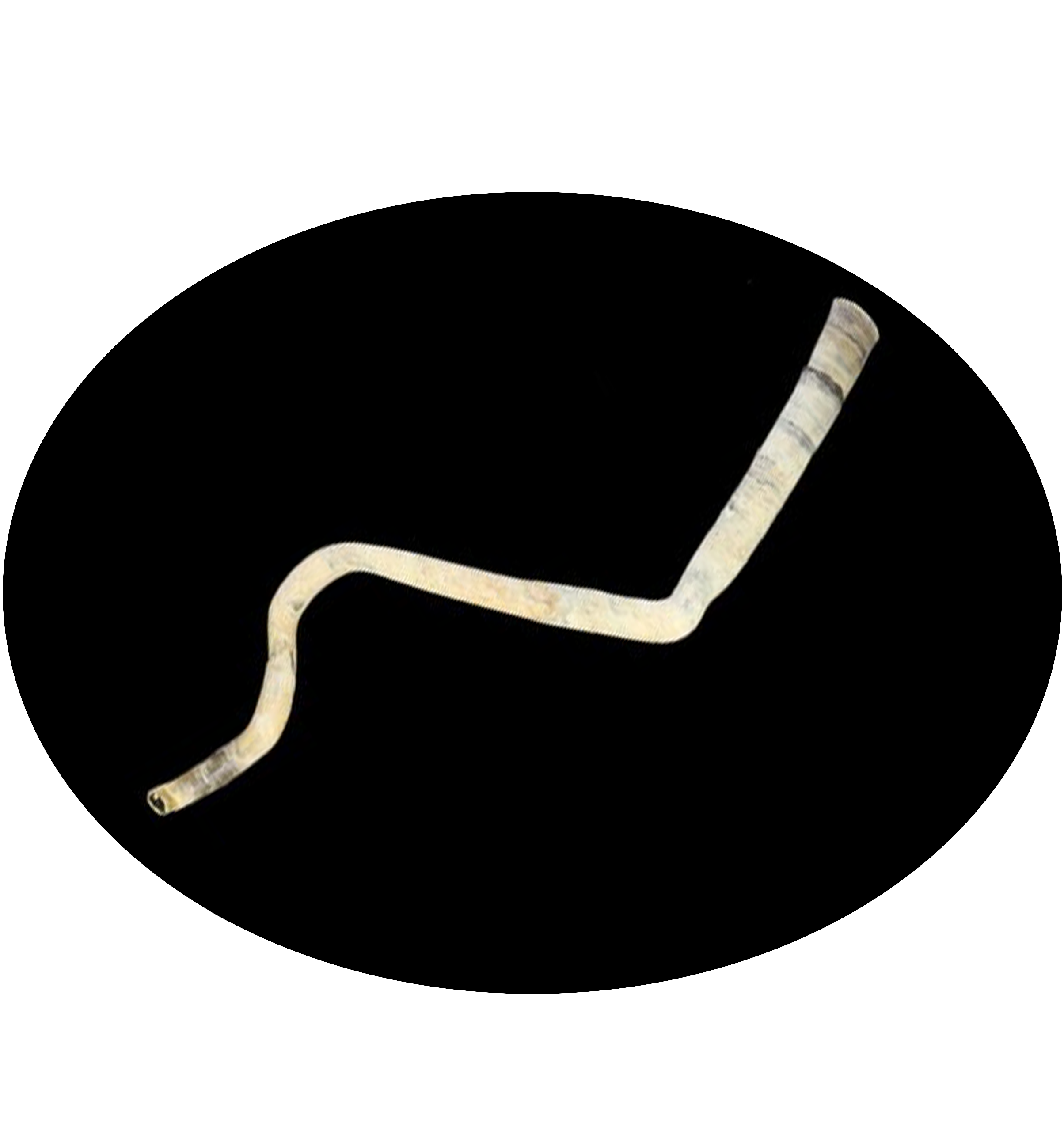
Escarpia spicata is a species of tube worm in the family Siboglinidae. It is commonly found in deep-sea cold seep ecosystems along the eastern Pacific Ocean, particularly off the coast of California and Mexico. These tube worms thrive in environments where hydrocarbons, such as methane and hydrogen sulfide, seep out of the seafloor. It relies entirely on a symbiotic relationship with sulfide-oxidizing bacteria for its nutrition. These bacteria reside in a specialized organ called the trophosome, located within the worm's body. The worm absorbs hydrogen sulfide and oxygen from the surrounding environment and delivers them to the bacteria via a highly efficient hemoglobin molecule. In return, the bacteria oxidize the sulfide to produce organic compounds that sustain the worm.
Animalia (Kingdom); Annelida (Phylum); Polychaeta (Class); Sedentaria (Subclass); Canalipalpata (Infraclass); Sabellida (Order); Siboglinidae (Family); Escarpia (Genus); Escarpia spicata (Species)
Escarpia spicata Jones, 1985
1. Jones M L. On the Vestimentifera, new phylum: six new species, and other taxa, from hydrothermal vents and elsewhere[J]. Bull Biol Soc Wash, 1985, 6: 117. (Jones et al., 1985)
2. Andersen A C, Hourdez S, Marie B, et al. Escarpia southwardae sp. nov., a new species of vestimentiferan tubeworm (Annelida, Siboglinidae) from West African cold seeps[J]. Canadian Journal of Zoology, 2004, 82(6): 980-999. (Andersen et al., 2004)
Central Pacific and Atlantic: USA and Mexico, depth range 1653 - 2020 m
| Species | Phylum | Common Name | Ecosystem | Depth | Habitat | NCBI Taxonomy ID |
|---|---|---|---|---|---|---|
| Escarpia spicata | Annelida | - | Cold seep | 1,650-3,314 | Atlantic Ocean | 53617 |
| Genome Assembly | Genome Size | Assembly level | Released year | WGS accession | Submitter | BioProject | BUSCO completeness (%) | Scaffold/Contig N50 (kb) | GC content (%) | Repeat Rate (%) | Gene Number |
|---|---|---|---|---|---|---|---|---|---|---|---|
| wsEscSpic3.1 | 1.1Gb | Chromosome | 2024 | CAXEFP01 | WELLCOME SANGER INSTITUTE | PRJEB74003 | - | - | - | - | - |

